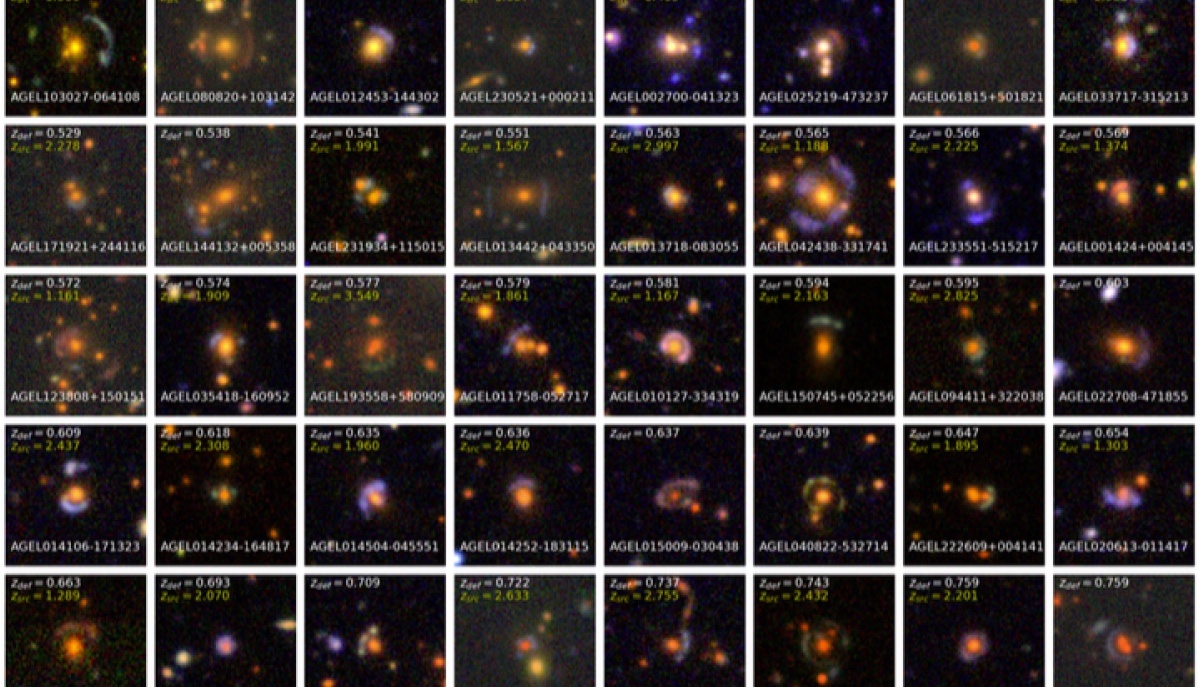Astronomers have been assessing a new machine learning algorithm to determine how reliable it is for finding gravitational lenses hidden in images from all sky surveys. This type of AI was used to find about 5,000 potential gravitational lenses, which needed to be confirmed. Using spectroscopy for confirmation, the international team has now determined the technique has a whopping 88% success rate, which means this new tool could be used to find thousands more of these magical quirks of physics.
“These lenses are very small so if you have fuzzy images, you’re not going to really be able to detect them,” said Dr. Kim-Vy Tran, from the ARC Centre of Excellence for All Sky Astrophysics in 3-Dimensions (ASTRO3D) and the University of NSW (UNSW), who led the study. “Our spectroscopy allowed us to map a 3D picture of the gravitational lenses to show they are genuine and not merely chance superposition.”

Scientists say that gravitational lenses could transform our ability to chart the evolution of galaxies since the Big Bang. This type of lensing occurs when light from a distant object is distorted by a closer massive object along the same line of sight. This distortion effectively creates a giant lens which magnifies the background light source, allowing astronomers to observe objects embedded within those lens-created arcs and rings that are otherwise be too far and too dim to see.
Gravitational lenses are a great tool for astronomy. Not only do gravitational lenses reveal distant objects like galaxies, but it can also provide information about how far away these galaxies are. Additionally, analyzing the nature of gravitational lensing patterns tells astronomers about the way dark matter is distributed within galaxies. It also provides a way to investigate both the development of structure in the universe and the expansion of the universe.
The machine learning algorithm was pioneered by Colin Jacobs at Swinburne University in Australia. He used the technique to sift through tens of millions of galaxy images to prune the sample down to 5,000. Other surveys, like dark energy surveys, have also been used to find lensing candidates.
Tran and colleagues assessed 77 of the 5,000 candidate lenses using the Keck Observatory in Hawai’i and Very Large Telescope in Chile. They confirmed that 68 out of the 77 are strong gravitational lenses spanning vast cosmic distances. This suggests that the algorithm is reliable enough to find thousands of new gravitational lenses. To date, gravitational lenses have been hard to find and only about a hundred are routinely used.
“Never did we dream that the success rate would be so high,” said professor Karl Glazebrook from Swinburne, and co-Science Lead on the paper, in a press release. “Now we are getting images of these lenses with the Hubble Space Telescope, they range from jaw-droopingly beautiful to extremely strange images that will take us considerable effort to figure out.”
The work is part of the ASTRO 3D Galaxy Evolution with Lenses (AGEL) survey. Tran said their goal now with AGEL is to spectroscopically confirm around 100 strong gravitational lenses that can be observed from both the northern and southern hemispheres throughout the year.

